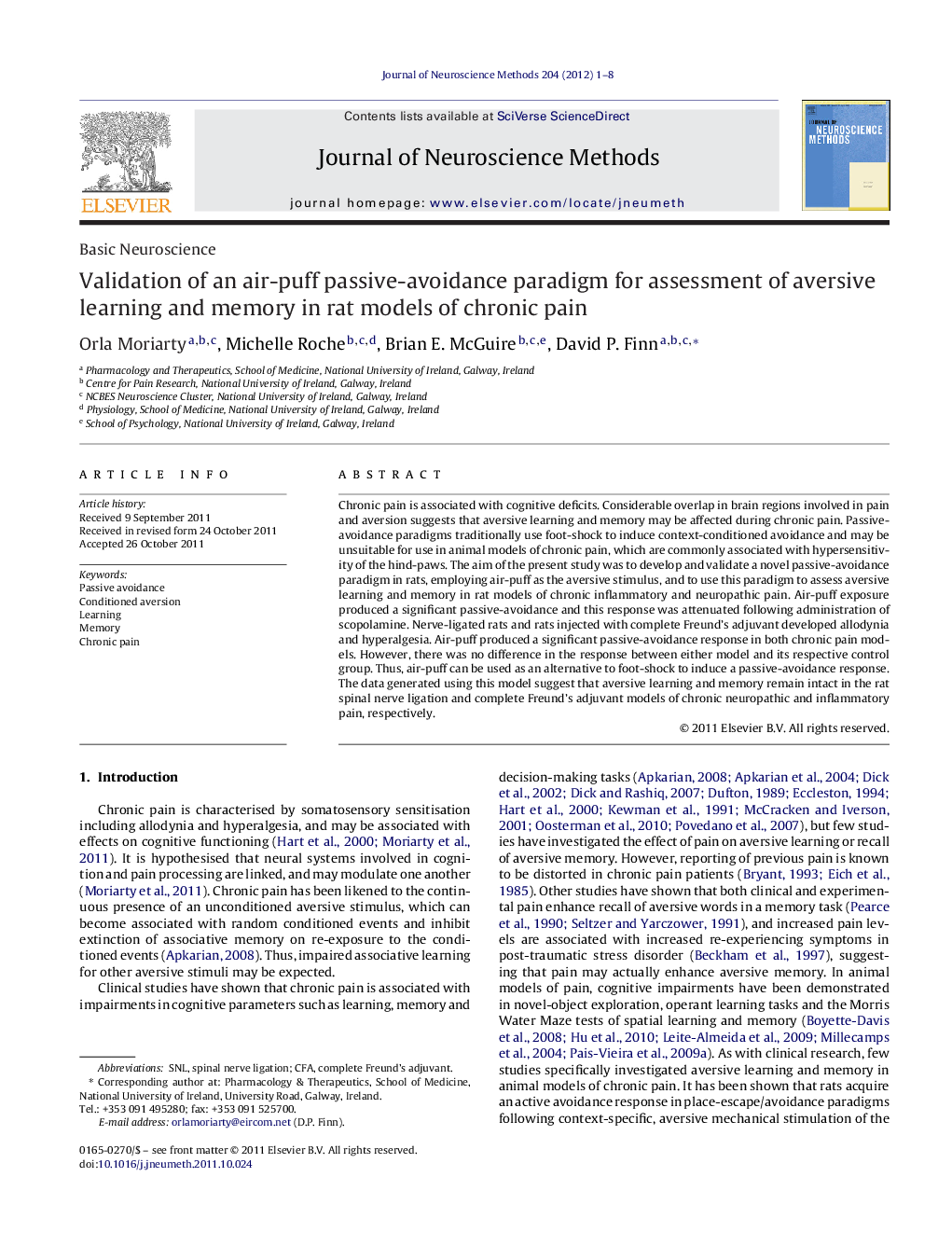| Article ID | Journal | Published Year | Pages | File Type |
|---|---|---|---|---|
| 4335210 | Journal of Neuroscience Methods | 2012 | 8 Pages |
Chronic pain is associated with cognitive deficits. Considerable overlap in brain regions involved in pain and aversion suggests that aversive learning and memory may be affected during chronic pain. Passive-avoidance paradigms traditionally use foot-shock to induce context-conditioned avoidance and may be unsuitable for use in animal models of chronic pain, which are commonly associated with hypersensitivity of the hind-paws. The aim of the present study was to develop and validate a novel passive-avoidance paradigm in rats, employing air-puff as the aversive stimulus, and to use this paradigm to assess aversive learning and memory in rat models of chronic inflammatory and neuropathic pain. Air-puff exposure produced a significant passive-avoidance and this response was attenuated following administration of scopolamine. Nerve-ligated rats and rats injected with complete Freund's adjuvant developed allodynia and hyperalgesia. Air-puff produced a significant passive-avoidance response in both chronic pain models. However, there was no difference in the response between either model and its respective control group. Thus, air-puff can be used as an alternative to foot-shock to induce a passive-avoidance response. The data generated using this model suggest that aversive learning and memory remain intact in the rat spinal nerve ligation and complete Freund's adjuvant models of chronic neuropathic and inflammatory pain, respectively.
► This article describes a novel air-puff-induced passive-avoidance paradigm in rats. ► We describe pharmacological validation of the paradigm using scopolamine. ► The paradigm may be used in cases of altered sensitivity to noxious stimuli. ► Aversive learning and memory remained intact in two models of chronic pain.
